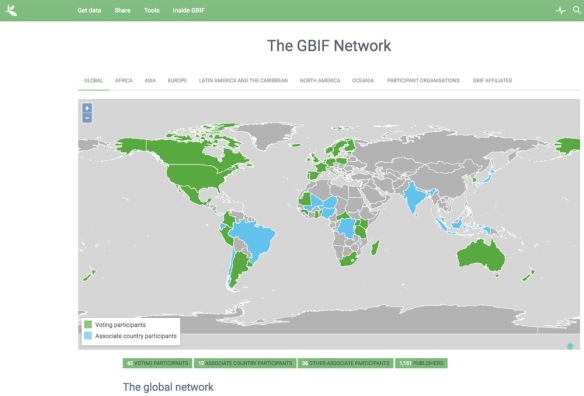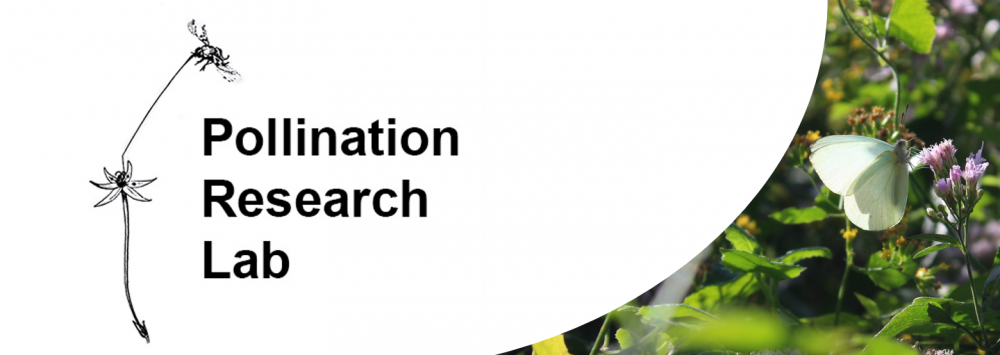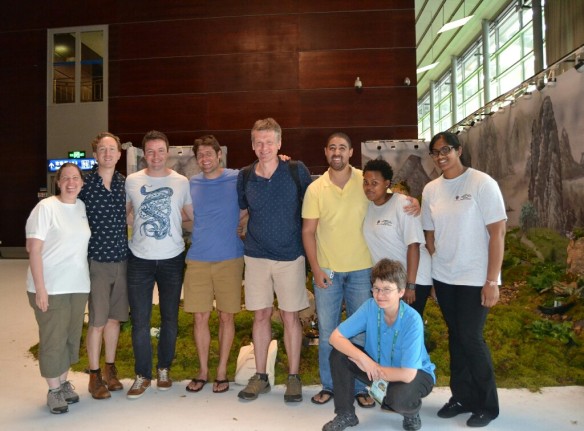This year’s Research Day of the UKZN School of Life Science happened on May 22nd, a very apt date being it also World Biodiversity Day. The day went by between talks and poster sessions and was a success, thanks to the enthusiastic efforts of the participants, the organiser (Flower Hunter Dr Timo Van der Niet) and the many volunteers. Presenters from the Pollination Research Lab: Continue reading
Author Archives: Marco Plebani
Insect-pinning course
Studying plant-pollinator systems also means taking samples of organisms acting on both sides of the interaction. This, in the case of insects, means sacrificing a few individuals for DNA studies, morphometric measurements, and museum records. Preparing a good insect specimen for preservation requires much more than just sticking a pin through it and pinning it to a board! PhD candidate Genevieve Theron knows it well, as she is working on a philogenetic study of long proboscis flies. Thanks to Genevieve’s effort, Dr John M. Midgley from the KwaZulu-Natal Museum visited our group for a two-day insect pinning course on May 18th and May 21th. Here are a few pictures from the course:
Sima tells little scientists about pollination biology
Lab member Simangele Msweli recently introduced primary school children to the natural magic of pollination ecology, what it means to be a scientist, and the importance of knowing the environment around us to protect it. The Sunday Tribune published an interview to her, you can read it by clicking on the image below.
Good job Sima!
(Data) sharing is caring! Praise to iNat and the GBIF projects.

A screenshot from my personal gallery on the iNaturalist website. At the moment of writing, total observations worldwide amounted to 7,537,961.
Science is made by good ideas and good data. They are both hard to come by, but for every good idea to be tested, many data are needed. As a result, scientists are always data-hungry. In this respect, internet-based “Citizen Science” projects are a huge asset: they allow anybody, scientists and laypeople alike, to provide information (distribution, behavior, etc.) on organisms worldwide. One major example is iNaturalist (iNat for its friends, www.inaturalist.org), which gathers pictures, audio records, sightings and their relative coordinates. Anyone can collaborate by either adding observations or helping with identification. This is fun for the amateur who takes pretty pictures and wants to know more about what they capture on camera; on the other hand it is useful for studies on species distributions, species interactions, behavioural studies… Data from iNat are also used by other projects such as gbif.org, a recent discovery for me and already one of my favourite data resources. The acronym GBIF stays for Global Biodiversity Information Facility: this website gathers geographic distribution data for organisms from a number of museums, herbaria, checklists and other sources, including iNat’s research-grade observations.
Give science a hand and hop on board!
-MP

A screenshot from the GBIF website.
NOTE: besides iNat, iSpot used to be another major website for documenting sightings of animals, plants and bugs. It looks like iSpot is downsizing now (at least its South African branch, I do not know the details), but fear not! Data from iSpot community in South Africa will not be lost as they will be merged with the iNat ones.
Some notes on floral variation in Nerine humilis by Ethan
Flower hunter Ethan (known to some as Dr Newman) has just published some notes on “Floral variation in Nerine humilis: A pollinator explanation” on the OVERBERG RENOSTERVELD CONSERVATION TRUST website. Check it out!
Updates from Sachin’s fieldwork

Sachin proving once again that fieldwork-shaggy is the new cool. [cropped picture from here]
Pollination is not only for bees
Yet another example of the diversity of flower visitors:
The Pollination Research Lab at the International Botanical Congress 2017
On the 23rd – 29th of July 2017, China hosted the 19th International Botanical Congress (IBC). This event is hosted every six years and brings plant scientists from different disciplines, to share their research projects, all which have one common goal, to value and protect plants. This year’s botanical congress was attended by 6 850 delegates from 77 countries. Amongst those attendees, were current and former members of our lab, who were presenting their research projects. See below a list of our flower hunters that presented, and their project titles.
Current Pollination Lab members:
– Key challenges for understanding floral mimicry
– Landscape perspectives on pollinator-driven evolution of floral scent signals
- Dr Ethan Newman – Ecological character displacement: style length variation in Pelargoniums driven by geographic mosaics of plant community structure
- Keeveshnee Govender (MSc candidate) – Rodent responses to volatile compounds provides insights into the function of floral scent in mammal pollinated plants
- Simangele Msweli (MSc candidate) – Floral similarity and pollinator sharing in Thunbergia atriplicifolia (Acanthaceae) and Exochaenium grande (Gentianaceae)
Graduates of the UKZN pollination lab that were also at this year’s IBC, included:
- Prof. Bruce Anderson – Quantum dots reveal the mechanics behind handedness in Wachendorfia flowers
- Dr James Rodger – How general is the relationship between fitness and abundance in wind-pollinated plants?
- Dr Sandy Steenhuisen – When flowers smell cheesy: an investigation into functional floral traits of African and Australian mammal-pollinated Proteas (Proteaceae)
- Dr Petra Wester – A unique case of floral specialisation for pollination by elephant-shrews
- Dr Karl Duffy – The extent to which mutualists affect the geographical range of plants in a changing environment
- Dr Michael Whitehead – Sexual mimicry promotes outcrossing and multiple paternity in sympatric orchid species
- Dr Tim Le Pechon – Phylogenetic analysis and morphological revision of the orchid genus Holothrix
The organisers of IBC 2017 had established “outstanding student awards” and “excellence scholar awards”. These awards were aimed to sponsor registration and or traveling expenses for students and researchers with exceptional academic achievements in plant sciences. These, in combination with funding from UKZN research day enabled our members to participate in IBC 2017 and we gratefully acknowledge their assistance. As a research lab, we are glad to have been represented in the 19th IBC. Through research, we are dedicated in contributing to the current knowledge of plants and are also actively participating in conservation initiatives. For more information on the International Botanical Congress, please see http://www.ibc2017.cn/
– Simangele Msweli
PhD position: Systematics and evolution of keystone pollinators in South Africa’s biodiversity hotspots

Prosoeca ganglbaueri probing its 50 mm long tongue into the long nectar tube of Zaluzianskya microsiphon (Matatiele). Photo © Harro de Moor.
A PhD project is available which focuses on the evolution of long-tongued flies, a group of charismatic and keystone pollinators in the Southern African flora. The aim of the project is to increase understanding of systematics and evolution in the Southern African endemic genus Prosoeca (Nemestrinidae), as a means to gain insight into the processes that may drive co-diversification and coevolution between plants and pollinators, ultimately giving rise to the tremendous biodiversity of the region.
The scope of the project includes diversity at two geographical and taxonomic scales: diversity within Prosoeca peringueyi in the Succulent Karoo biodiversity hotspot, and the genus Prosoeca across southern Africa.
We are looking for an enthusiastic student with a strong interest in evolutionary biology to execute this project. Experience with molecular and phylogenetic techniques is an advantage. The project is based at the University of KwaZulu-Natal (Pietermaritzburg) under supervision of Dr Timo van der Niet (main supervisor) and Prof Steve Johnson (co-supervisor), but will be done in close collaboration with partners at Stellenbosch University (Prof Bruce Anderson, Prof Allan Ellis). Opportunities for fieldwork exist, especially with a focus on collecting Prosoeca flies in previously under-collected areas.
We offer a student bursary for three years at the value of 100,000 ZAR per annum and all running expenses are covered. The pollination laboratory of UKZN is well-equipped, including facilities for molecular systematics and a fleet of vehicles for fieldwork. Furthermore, the Natal Museum in Pietermaritzburg harbors one of the world’s most important collections of Nemestrinidae.
For more information contact Dr Timo van der Niet (vanderNiett@ukzn.ac.za), or send your application for this position to this email address before 15 July. Include your CV with contact details of two referees, and a cover letter in which you explain why you are interested in this position.
Yesterday was #pollinatormonday and we didn’t realise.
May 29 was “pollinator monday” (or should I say #pollinatormonday?) and National Geographic celebrated it with the picture of a genet. A genet? What the hell is that? Here it is:
It turns out, not only bees can pollinate flowers. Also bats, birds, lizards, and mammals (not only genets) can visit flowers to feast on their nectar, transferring pollen grains from flower to flower in the process. Even among insects, besides bees and butterflies, in the ranks of pollinators we find wasps, moths, flies… The list goes on. We are proud to say that the research team that first documented that genets and other carnivore mammals visit Protea flowers included four current and/or former members of our lab [link to article].
Here at the Pollination Research Lab we like to find out the details of specific pollination systems (such as that of long-tubed flowers pollinated by long-proboscis flies, a system known only for Southern Africa and the Himalayas and that we adopted as our symbol), but also the general rules that drive their ecology and evolution, may they be genets and Protea flowers, long-proboscis flies and long-tubed flowers, or the humble bees and daisies.
– MP








